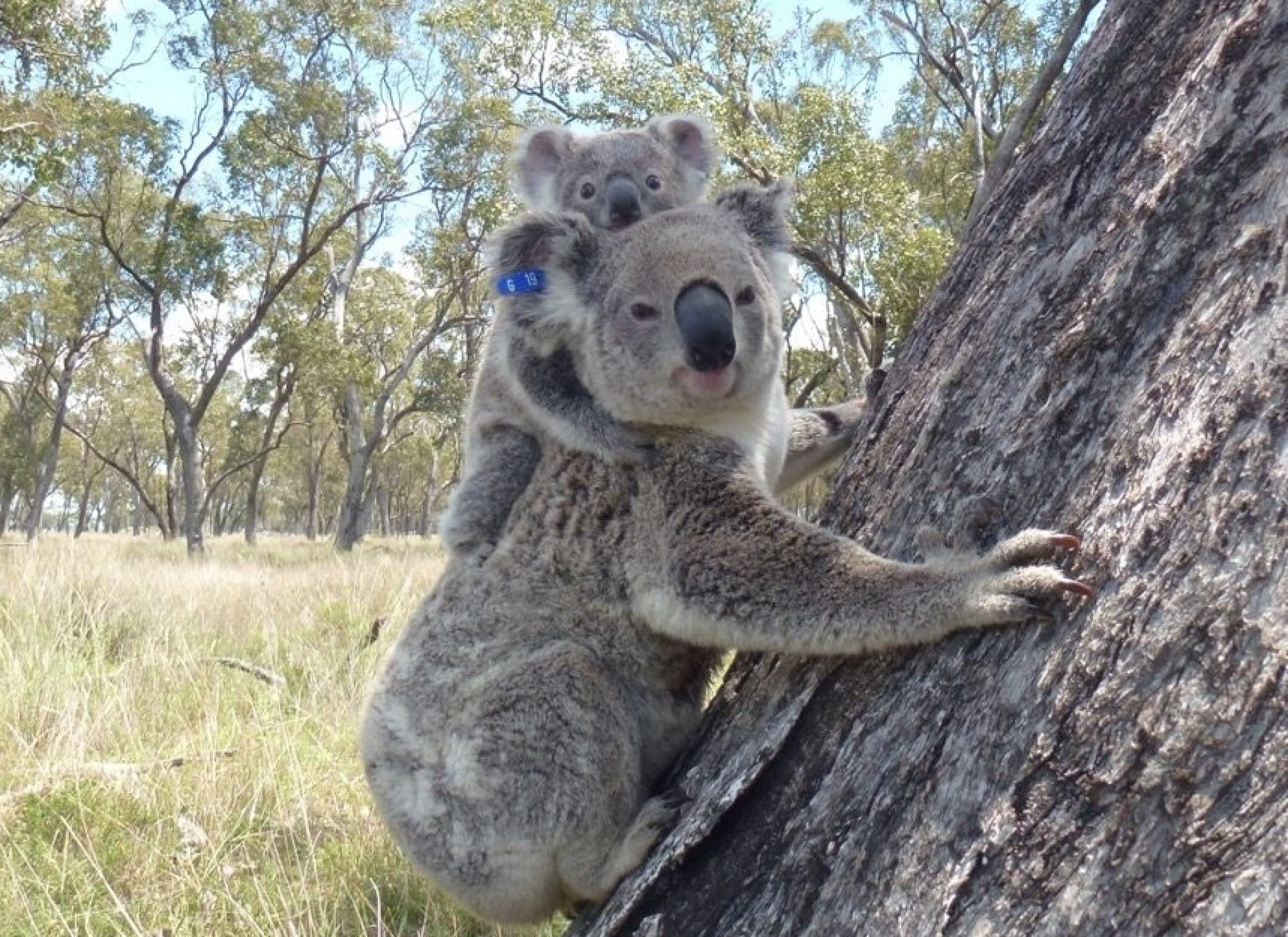The Koala Research Project was conducted by the University of Queensland in conjunction with the Queensland Trust for Nature and with the support of New Hope Group.
Over a 12-month period, the research focused on the koala population situated around the mine site using GPS tracking collars to follow the koalas as they moved around the local area.
Research Fellow at the University of Queensland, Dr Bill Ellis PhD said after initial tagging, the research group visited the site regularly to monitor the movement and health of the population, arrange for medical treatment where required and understand how they were using the landscape.
“We found that, across the site, koalas were using a range of tree species,” Bill said. “On our last visit we retrieved the radio collars from the koalas at New Acland and conducted a final survey on the control site.
“In general, we found the koalas to be in good condition, with several young raised on the New Acland site during the study period.”
One female – Nelly, had been first captured with a joey in her pouch. On the final visit, she was found close to her original capture location and a review of her tracking data showed she remained close to and used a particular stand of trees along Lagoon Creek, very close to mining operations.
With Nelly was her baby, Rosa, now around 12 months old and sticking close to mum.
“The Lagoon Creek system is clearly important to the population, so efforts to stop road strikes where the creek crosses the road are important,” Bill said.
Another young mum, Jemima, received an added benefit from the program with researchers temporarily removing her from site during the study to treat an eye infection common to koalas.
Testing positive for Chalmydia, but with only mild disease signs, she was treated and returned to site once clear of disease and negative for the bacteria.
Despite her infection, Jemima was carrying a young, unfurred joey in her pouch at first capture. The follow up monitoring of Jemima throughout the study revealed that she successfully raised her joey, returning to use her home range after treatment and that she did not show any further signs of disease.
Bill said that overall, the research built on long term data which showed the local population, while relatively small, was stable.
“We think there is a widespread, low-density population across this landscape,” Bill said. “So, building habitat connectivity, reducing predation by wild dogs and reducing road kills are probably the keys to future persistence of koalas.
“Having the support of New Hope and QTFN is fantastic. We were given complete access to the site and provided a very knowledgeable guide to keep us out of harms way.”
General Manager of Coal Operations at New Hope, David Vink said the company was keen to provide financial and logistical support to the research team.
“It is important to us that we understand what effect our operations have on the environment and the native wildlife,” David said.
“The interesting thing about this research was that it provided information about koalas’ health and activities close to the mine.
“We found they are quite active in their own small territories and that they live in a habitat that is quite close to our operations.
“I think it is testament to the amount of work New Acland puts into its rehabilitation and conservation work that native species like koalas are at the mine.”
